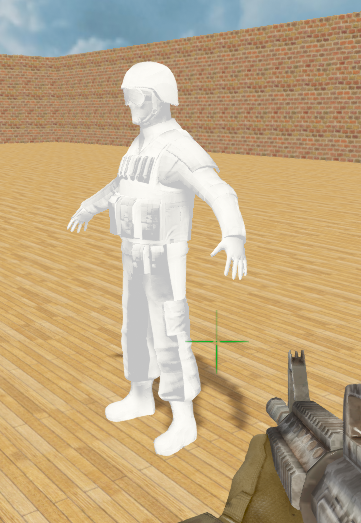Hello! 
I have been trying to implement Normal Mapping into my engine for quite awhile now, but I can not seem to get it to work properly. There has to be something simple I am missing…
Here is the current GLSL code for my normal mapping:
// Vertex
#version 330
uniform mat4 viewMatrix;
uniform mat4 projectionMatrix;
uniform mat4 modelMatrix;
uniform mat3 normalMatrix;
uniform mat3 normalModelMatrix;
uniform vec4 modelColor;
layout (location = 0) in vec3 in_position;
layout (location = 1) in vec3 in_normal;
layout (location = 2) in vec2 in_texCoords;
layout (location = 3) in vec4 in_Color;
out vec3 vNormal;
out vec2 vTexCoords;
out vec4 vColor;
out vec3 vEyePosition;
void main(){
vEyePosition = (viewMatrix * modelMatrix * vec4(in_position, 1.0)).xyz;
gl_Position = projectionMatrix * vec4(vEyePosition, 1.0);
vNormal = normalMatrix * normalModelMatrix * in_normal;
vTexCoords = in_texCoords;
vColor = in_Color * modelColor;
}
// Fragment
#version 150
uniform sampler2D sampler;
uniform sampler2D normalMap;
uniform float specular;
uniform float gloss;
in vec3 vNormal;
in vec2 vTexCoords;
in vec4 vColor;
in vec3 vEyePosition;
mat3 cotangentFrame( vec3 N, vec3 p, vec2 uv ) {
// get edge vectors of the pixel triangle
vec3 dp1 = dFdx(p);
vec3 dp2 = dFdy(p);
vec2 duv1 = dFdx(uv);
vec2 duv2 = dFdy(uv);
// solve the linear system
vec3 dp2perp = cross( dp2, N );
vec3 dp1perp = cross( N, dp1 );
vec3 T = dp2perp * duv1.x + dp1perp * duv2.x;
vec3 B = dp2perp * duv1.y + dp1perp * duv2.y;
// construct a scale-invariant frame
float invmax = inversesqrt(max(0.00000000000000001, max(dot(T, T), dot(B, B))));
return mat3( T * invmax, B * invmax, N );
}
vec3 perturbNormal( vec3 N, vec3 V ) {
vec3 map = texture( normalMap, vTexCoords ).xyz;
map = (map * (255.0/127.0)) - (128.0/127.0);
map.z = sqrt( 1.0 - dot( map.xy, map.xy ) );
mat3 TBN = cotangentFrame( N, V, vTexCoords );
return normalize( TBN * map );
}
void write(vec3 diffuse, vec3 normal, float specular, float glossiness, vec3 emissive);
void main(){
vec4 textureSample = texture(sampler, vTexCoords) * vColor;
if(textureSample.a < 0.5){
discard;
}
vec3 normalNormalized = normalize(vNormal);
vec3 normalPerturbed = perturbNormal(normalNormalized, normalize(vEyePosition));
write(textureSample.xyz, normalPerturbed, specular, gloss, vec3(0, 0, 0));
}
The problem is that when I rotate my camera the normal map changes its shading… I am almost 100% sure that all my matrices are correct, as if I use a texture with color (128, 128, 255) the normal shading works fine.
I believe the issue lies in the fact that my game uses the z axis for height, instead of the y axis, which could cause the TBN to be incorrectly calculated…
Also it causes seams like this:
My artist is absolutely certain that his normal map is correct. He’s tested it in Blender, and marmoset toolbag.
I have tried the obvious tests, both negating and swizzling the x and y component on the “map” variable in the perturb normal function.
I have tried a few different perturb normal methods from google, none seem to work.
I have tried swizzling the TBN matrix.
Does anyone have any ideas? :c

